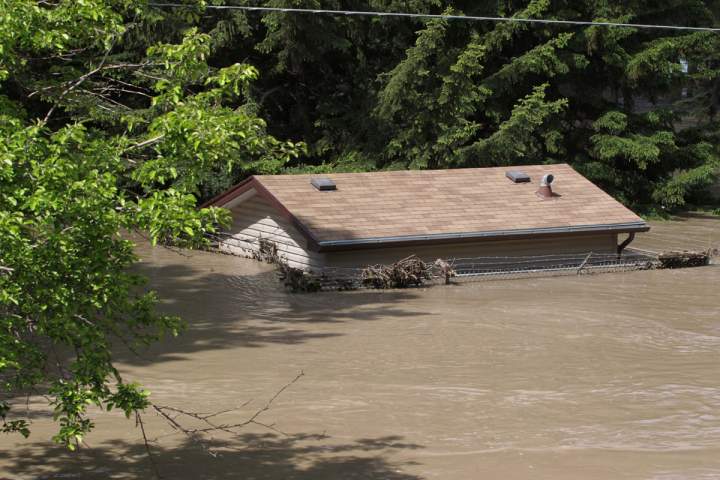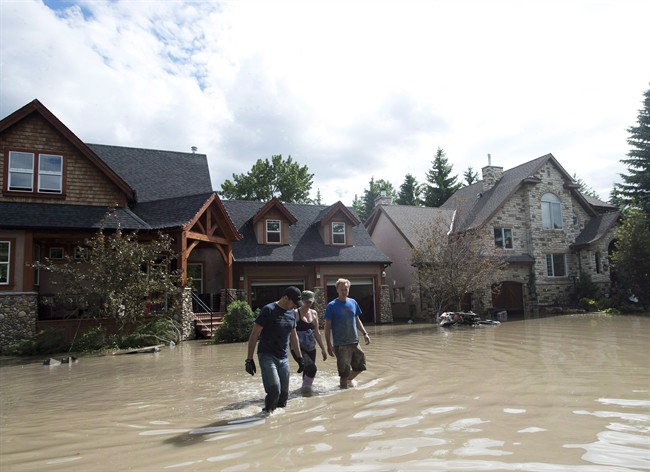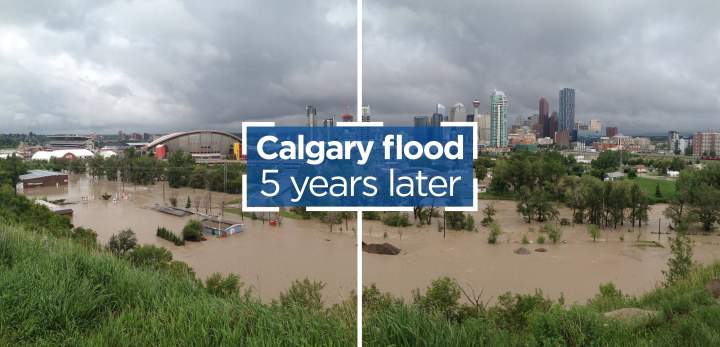
By
Spencer Gallichan-Lowe
Global News
Published June 22, 2018
7 min read

The 2013 flood changed many things for Calgarians, from the way we plan our city to our relationship with the waterways around us.
There was the financial cost, as well — millions of dollars were swept away by the floodwaters that year, along with any ideas that a major disaster could ever befall a modern city like Calgary.
Coupled with the flooding in Toronto, 2013 ranked among the costliest years for insurers in Canadian history.
The floodwaters washed away the old attitudes and brought in new ones — especially when it came to insurance in Canada, according to Bill Adams, vice-president for the Western Canada division of the Insurance Bureau of Canada.
“There’s been a lot of change,” he said. “The industry had to think about ways to better protect Canadians.”
Before 2013, overland flood insurance wasn’t readily available, he said.
Most homeowners had a form of flood insurance, which usually covered sewer backup, damage caused by leaking roofs or damage caused by a toilet overflowing in an adjoining residence, Adams said.
As a result, Adams said, people had the mistaken idea that “I’m fine” should there be a major flood. But Adams said the 2013 flood was unique, in that there was water backing up into people’s homes through the sewer lines and through overland flooding.
Adams said the combination of overland flooding and the local infrastructure not being able to handle the massive amount of water that inundated some Calgary neighbourhoods left many homeowners at a loss about what to do.
What ended up happening, Adams said, is insurance companies would compensate for the sewer backup as per their insurance agreements. But some of these companies could not cover the damage caused by the water coming in from other sources, such as through the ground.
The federal government even notes on its flood preparedness site that most Canadians don’t have overland flood insurance.
The lack of overland flood insurance forced the three levels of government to dig deep into their respective treasuries.
The Red Cross raised about $45 million to help homeowners, while the provincial government spent about $2.5 billion on various recovery programs. The city reported the total cost of the flood to the city at being about $787 million, which included the cost to repair infrastructure, emergency services and recovery costs.

Other factors also added to insurance costs that year — including how expensive basements cost to repair.
“The most expensive rooms are often in the basement,” Adams said.
That’s because basements have changed in recent decades from being a place where the furnace and other household systems were kept, to being full-blown home theatres and games rooms, in some cases.
Those “man caves” often contain a lot of expensive electronics. People also store collectables and family heirlooms in basements, which can add to the tragedy when a flood strikes, Adams said.
The insurance industry had to regroup after the 2013 flood, so changes were made to start offering overland flood insurance in addition to standard sewer backup policies.
“We said to ourselves…we need to make it easier for people,” he said.
Adams said it can be expensive for some Canadians and some won’t qualify at all, because the risk is simply too high. (However, he suggests about 90 per cent of Canadian insurance customers will be able to access this type of insurance).
“Overland flood insurance is still a new coverage in Canada and some insurers have started to offer the coverage. In a very short period of time – a couple of years – we have seen many insurers make coverage available,” he said. “It will likely take several years for the market to fully mature and for that actual figure to be known – but so far, insurers’ experience is in line with those estimates.”
If there’s a man in Calgary who constantly thinks about flood risk in the city, it’s Frank Frigo.
As part of the city’s watershed analysis team, he’s been busy in the years since the 2013 flood to prepare and educate Calgarians for the next flood.
“[Flooding] is a very dynamic risk and risk profiles are changing for communities,” he said. “We want Calgarians to remain aware.”
The city’s focus has been mostly on flood mitigation — better infrastructure like dams and water management systems, but education has been a big priority for his team, as well.
However, Frigo doesn’t think simply offering overland flood insurance to Calgarians will mitigate the risk homeowners face in certain neighbourhoods.
“Analysis of flood mitigation options…has demonstrated that the remaining risk in Calgary is very high and that it would appear to be far more economically efficient…to invest in infrastructure to reduce the risk,” he said.
It’s simply less expensive to invest in infrastructure projects and other flood management systems than to offer more insurance options, like overland flood insurance.
“Preventing damages—safety and environmental risk—to reasonable thresholds appears to be less expensive than simply storing away funds to repair damages,” Frigo said.
“Insurance is likely a very useful resilience measure for areas with lesser risk, but presently the majority of area and infrastructure within our flood-risk communities remains too high to make the insurance tool as advantageous,” he said.
The end goal, he said, should be continuing the flood mitigation projects, some of which are currently underway.
“It would be more elegant and more efficient to invest in resilience programs than to make someone pay for high insurance premiums,” he said.

Still, despite the flood risk — and the potentially high insurance they may have — people still are looking to buy houses in areas of the city that flooded out in 2013.
While Davison acknowledges property values in these neighbourhoods haven’t returned to pre-2013 levels, she said it’s likely due to other factors, like the recent provincial recession, Ottawa’s tightening of mortgage rules and other market factors.
“I think there is great value in these lower-lying neighbourhoods,” she said.
Davison herself lives in one such area and says she wouldn’t live anywhere else. She added many people in these areas have put in a lot of work to make their properties more flood resilient — like installing backflow valves, grading their properties and employing other measures.
“I think people have slowly put their fears of a flood to rest,” she said.
While memories of the 2013 flood may be fading for some in the city, Adams wants to remind Canadians that flooding is the No. 1 disaster risk for Canadians — more than fire or even property theft.
“In our experience, most people don’t believe they are at risk…people are completely oblivious,” Adams said.
That’s why it’s important to check your insurance to see what you are covered for and if necessary, get the overland flood insurance, he said.
“A good question is also: “What won’t I be covered for?”
Most of the flooding Calgarians will face in the immediate future is more likely to be caused by a sewer backup, he said, so homeowners should inspect their properties and make the necessary changes to reduce the risk of flood damage.
And depending on your insurance plan, you may even get a reduced premium.
“Mitigation measures such as sump pumps and backwater valves may make the property eligible for premium discounts or can even make the difference on whether an insurer will offer coverage,” he said. “Again, everyone’s circumstances are a little (or a lot) different so it is vital for people to talk to their insurance representative and not simply rely on what they hear from others.”
Adams said while insurance can help those at risk, at the end of the day, it’s about those infrastructure investments.
“It is about infrastructure – but also about how we plan our communities – especially if we continue to see more severe weather that the scientific community unanimously predicts will occur,” he said. “Communities are going to have to make infrastructure investments a much higher priority to mitigate flood risk for people who already have homes in at-risk areas.”






Comments